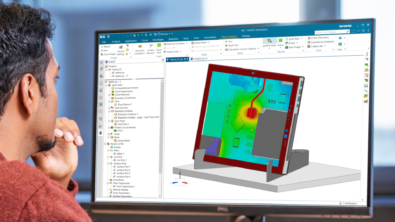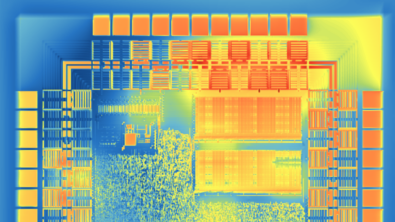Simcenter™ FLOEFD™ 2019.3: What’s New?
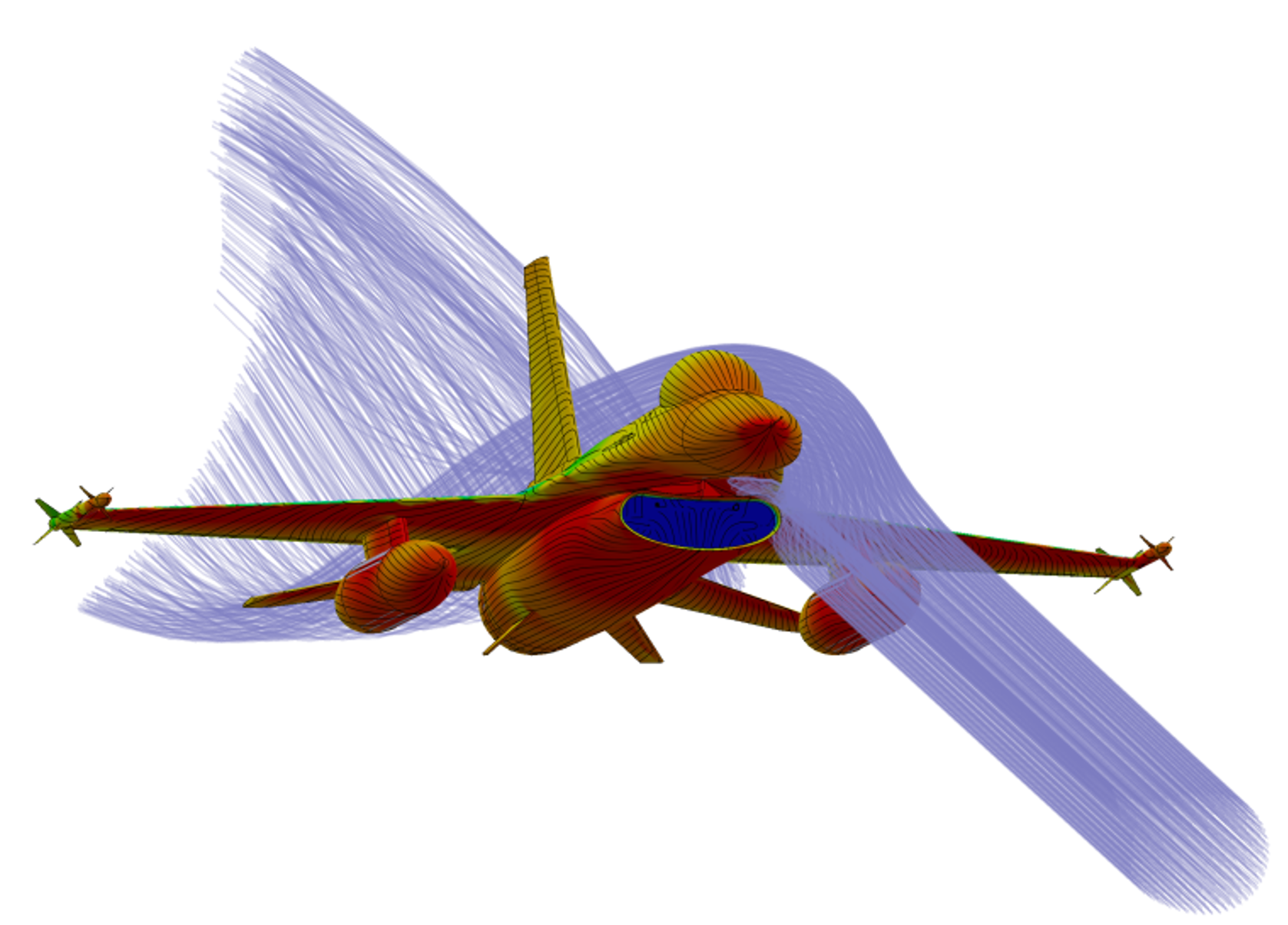
Simcenter FLOEFD 2019.3 was released in November 2019. The new version provides a range of new features and enhancements – from PDML import for IC packages to the support of new CAD versions. Let’s take a look at the list of new functionalities below:
PDML Import of IC Packages
PDML was originally a Simcenter™ Flotherm™ format which is often used by IC vendors to supply users with IC package simulation models. Such an IC package definition in *.pdml format can now also be imported into Simcenter FLOEFD (requires EDA Bridge license). The PDML format contains information about geometry, sources and material properties. The following information can be imported:
- Geometry
- Power load (heat source)
- Solid material properties, surface radiative properties
- Thermal compact model definition (2R, Network assembly)
This enables users to leverage the thermal models provided directly by the supplier.
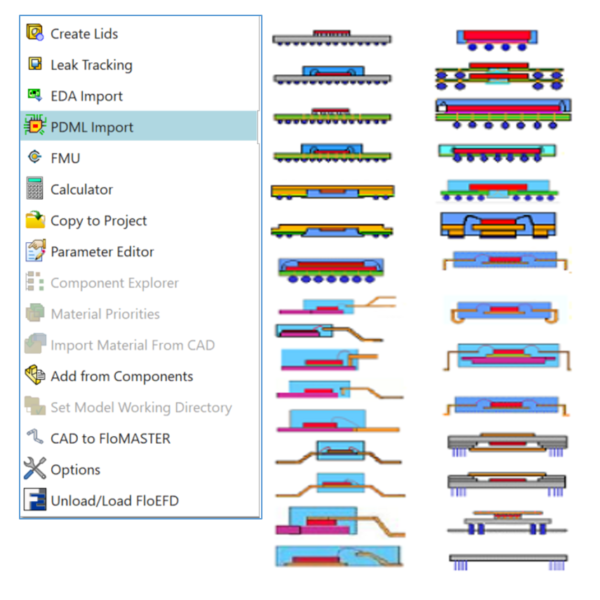
PCB Import into an Existing Project
A PCB can now be imported into an existing project. The EDA Bridge adds the PCB to a separate component which is then added into the main assembly and the PCB definition is added as conditions linked from this component (Add from Component). You can then easily copy the imported PCB boundary conditions to the same project using a right-mouse click on the PCB component folder in the From Component tree. With this new capability, importing even multiple PCBs to existing projects is much easier.
Goal and Time Dependency of Parameters
Simcenter FLOEFD project parameters can now be dependent on goals and time. This feature enables more possibilities for the use of project parameters.
Equation Goal CAD Dependency
The equation goal can now depend on CAD parameters such as lengths and angles. This functionality, for example, enables the direct calculation of CAD parameter dependent values such as Reynolds Number which is dependent on the length or diameter of a component and automates the post-processing, especially in parametric studies.
Averaging of Results in Steady-State Simulations
Visualization parameters can now be averaged over a user-defined interval of iterations in a steady-state analysis. If you enable averaging in the Calculation Control Options, additional parameters appear in the list. Averaging can smoothen the result image in case of oscillations. It can for instance dramatically reduce the noise in a Monte Carlo radiation simulation as the rays and their distribution are calculated again every few iterations.
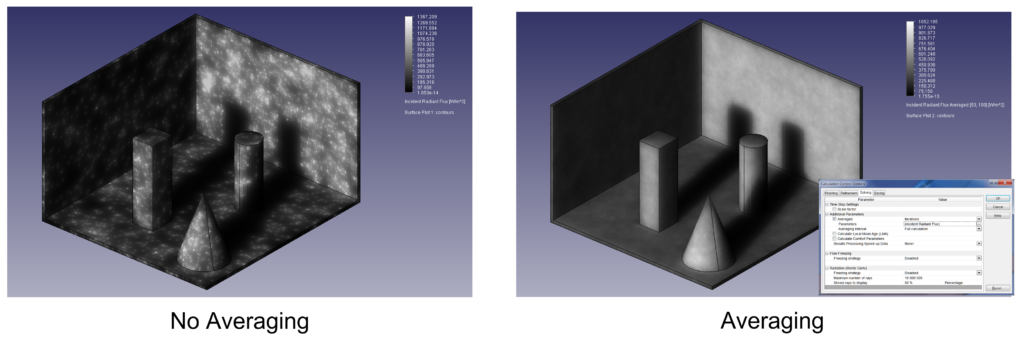
Trajectory Visualization Speed-up
The trajectory type Pattern on Shapes now displays trajectories immediately after definition. A new Sphere shape has been added and provides an easier definition of starting points. This makes it possible to manipulate the pattern or shape and see directly the impact on the trajectories and the flow field.
Locking the Plot Min Max Values
A plot’s minimum and maximum values can now be locked so they are not automatically updated if the plot is copied to other projects or when results are updated. The plot Min Max buttons work as a toggle and keep the plot Min Max until they are reset. The buttons in the color bar reset plot Min Max.
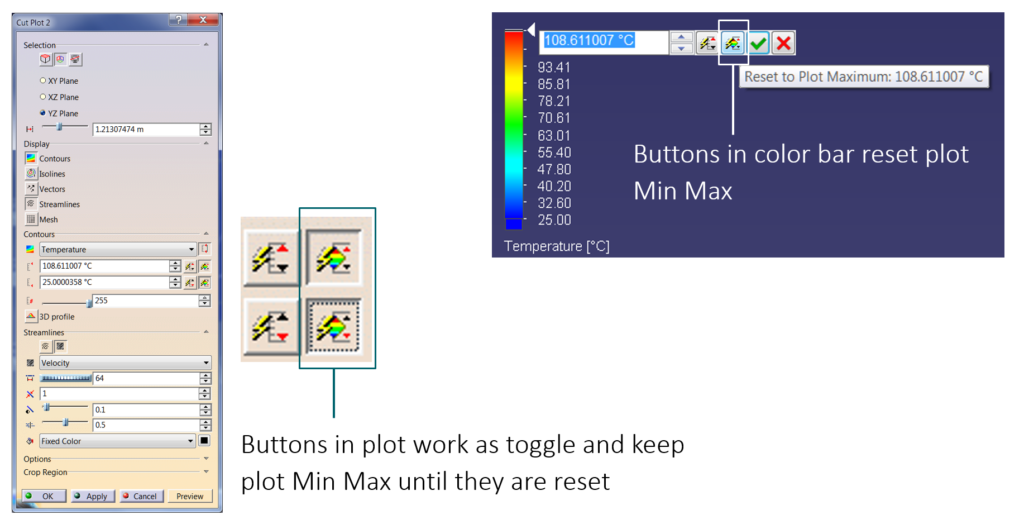
Improvement of the Remote Data Management
After finishing the computation, results from the calculation server are now automatically copied to the client computer even if the CAD software was closed. This way, the results are copied back to the client computer without waiting for the user to open the software again.
Remote Calculation with Windows HPC Pack 2016 Scheduler
You can now pass various arguments to the scheduler (no need for administrative privileges); arguments include template, priority, nodes and node groups, hold time.
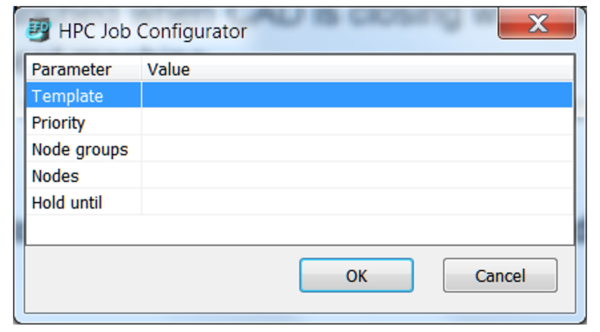
Improved Customize Licenses Feature
The Customize Features now lists modules rather than atomic license features. It provides better control over the modules as some atomics are used by multiple modules.
System administrators can now customize the license choice for multiple users using the CustomizeFeatures.exe routine. For more details, refer to the “Selecting License Features to Use” in the Installation Guide.
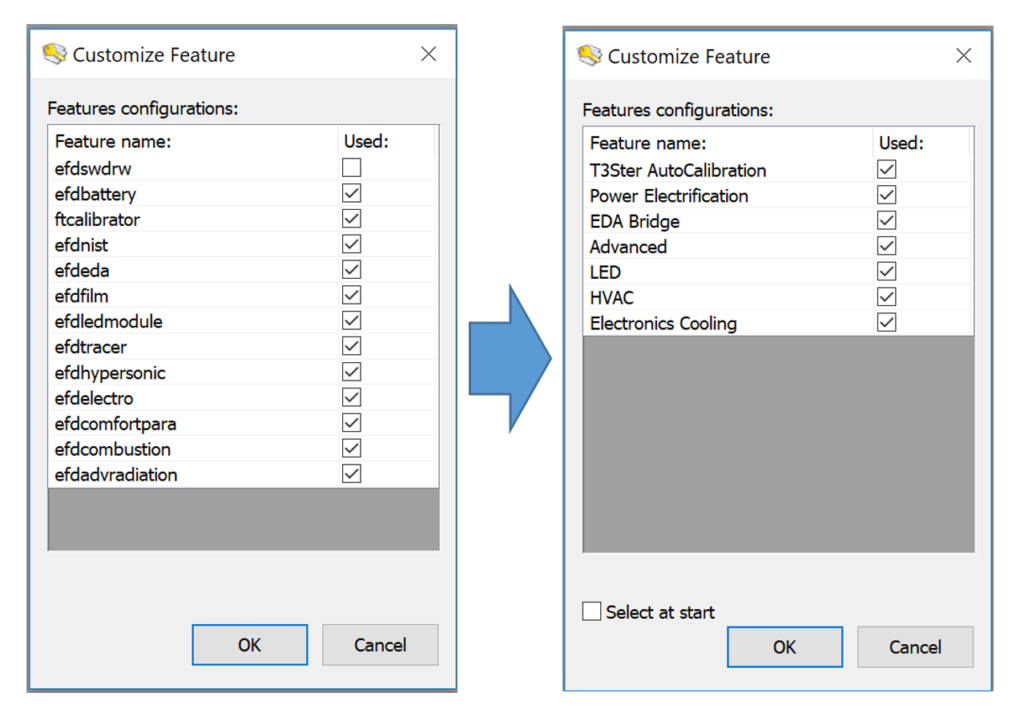
Phase Change for all Real Gases
It is now possible to use phase change also for real gases that are not refrigerants.
New FLOEFD View Visualization Options
The free result viewer FLOEFD View has now the option to use “Normal to Plot” as a view option, the rotation now rotates around the center of the view and the section view can now crop plots as well not only the geometry.
Some more Post-Processing Enhancements
Here are also some more post-processing enhancements:
- The “Save As” option to save images can now also save the view modes such as wireframe, shaded and shaded with edges.
- The “Results Summary” now also provides information on the turbulence parameters.
- In the “Surface Parameters” it is now possible to use the offset option to provide parameter information in an offset to the selected surface as it is known in the surface plot feature.
- The “Ray Plot” for visualizing Monte Carlo rays can now be defined before the simulation so it can be automatically processed with the Batch Results Processing after the simulation is completed.
Name Definition for Point Goals
In the Point Goal definition when adding them by coordinates, users can now set the name of the goal.
Update on the Mentor Standard Licensing
This version supports Mentor Standard Licensing (MSL) version 2019_3 which uses FlexNet™ 11.16.4. This may require you to update the license server.
New CAD Versions are supported
Support for Solid Edge 2020
Support for Siemens NX 1847 and 1872 Series
Support for Creo 6.0
Support for CATIA V5-6 2019 (R29)
For additional information and a complete list of new capabilities, please go to the Support Center site (https://support.mentor.com) or read the release highlights file provided with the installation package.
